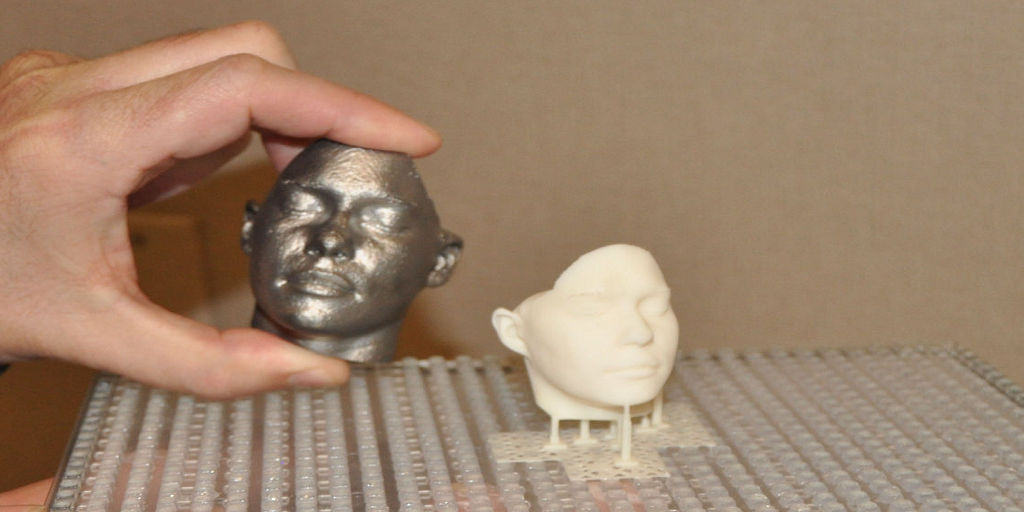This expansion is continuing at NAVSEA’s Naval Surface Warfare Center Dahlgren Division (NSWCDD) and the Combat Direction Systems Activity (CDSA) Dam Neck in Virginia, as they continue to provide access to 3D printers and promote their use within their own science and engineering community. They go down in history as the first warfare center to boast a metal 3D printer, and will use it to increase speed in production time, allowing for quick replacement of parts when required in the field or out to sea.
A mini-replica of a human head created with 3D printing technology was demonstrated during the December Print-A-Thon. (Photo: US Navy)
Really getting into the technological swing, they even went so far as to hold a 3D Print-A-Thon at NSWCDD last month, meant to:
- Expose the Dahlgren workforce to available 3D technologies
- Educate engineers and scientists on 3D design and guidelines
- Encourage experimentation in the 3D arena
- Seek innovative ideas in 3D printing that will benefit the warfighter
Some of their 3D printed models were on display, and those attending were treated to viewing a replica of a warship’s Command Center Design console, showing off its portability, lighter weight, and durability.
“We are on the ground floor of 3D Printing,” said Dennis McLaughlin, NSWCDD Technical Director, addressing approximately 100 participants. “We need to move past the trinket stage and come up with examples for senior leaders to see. Let’s come up with ideas for what else we can do.”
Figurines aside, they are able to take credit for the Rapid Prototype HexaPod Robot. While still in R&D, the Navy sees this as working to the warfighter’s benefit, offering the ability to navigate at low power in rough areas of terrain. This 3D technology is able to offer a covert heat signature that offers a low profile. With projects like this, they are already noting the benefits, as they are able to make prototypes three or four times faster now. A great example of this new speed in production, as well as allowance for changes, was when engineers decided to reduce the weight of the robot just hours before their Print-A-Thon. They were quickly able to lighten things up–from 2.65 kilograms to 2.06 kilograms.
“The ability to move additive manufacturing into the field would allow for equipment to be made on demand, reducing the overall footprint on the ground and dramatically increasing flexibility,” said Jason Phillips, an NSWCDD engineer in the Disruptive Technologies branch.
They are even branching into some of the more extremely complex facets of 3D printing like that of using comprehensive 3D scans to make items like prosthetics, masks, and much more. At the Print-A-Thon, Kevin Streeff, instrumentation engineer, demonstrated how a laser tracking camera would be used to define a head, with complete body scans able to be performed quickly as well.
Scanning is also very relevant to military use, however, in that they can use it for scanning mechanical components for modeling, analysis or re-engineering.
“We have a suite of varying 3D capabilities across the base,” said Ricky Moore, Lead Mechanical Engineer for NSWCDD’s Disruptive Technologies Branch. “We are developing lessons learned with regard to fabrication and design.”
NSWCDD in particular has been using 3D printing for quite some time–long before news of it began to hit the mainstream, piquing worldwide curiosity. For nearly ten years, they have been using 3D printing to increase productivity and speed, but this became more focused when they began taking 3D printing directly to fleet sailors, emphasizing the benefits of 3D printing to them–and there seem to be no arguments there as personnel are able to create necessary items as well as use their creativity in coming up with useful designs.
